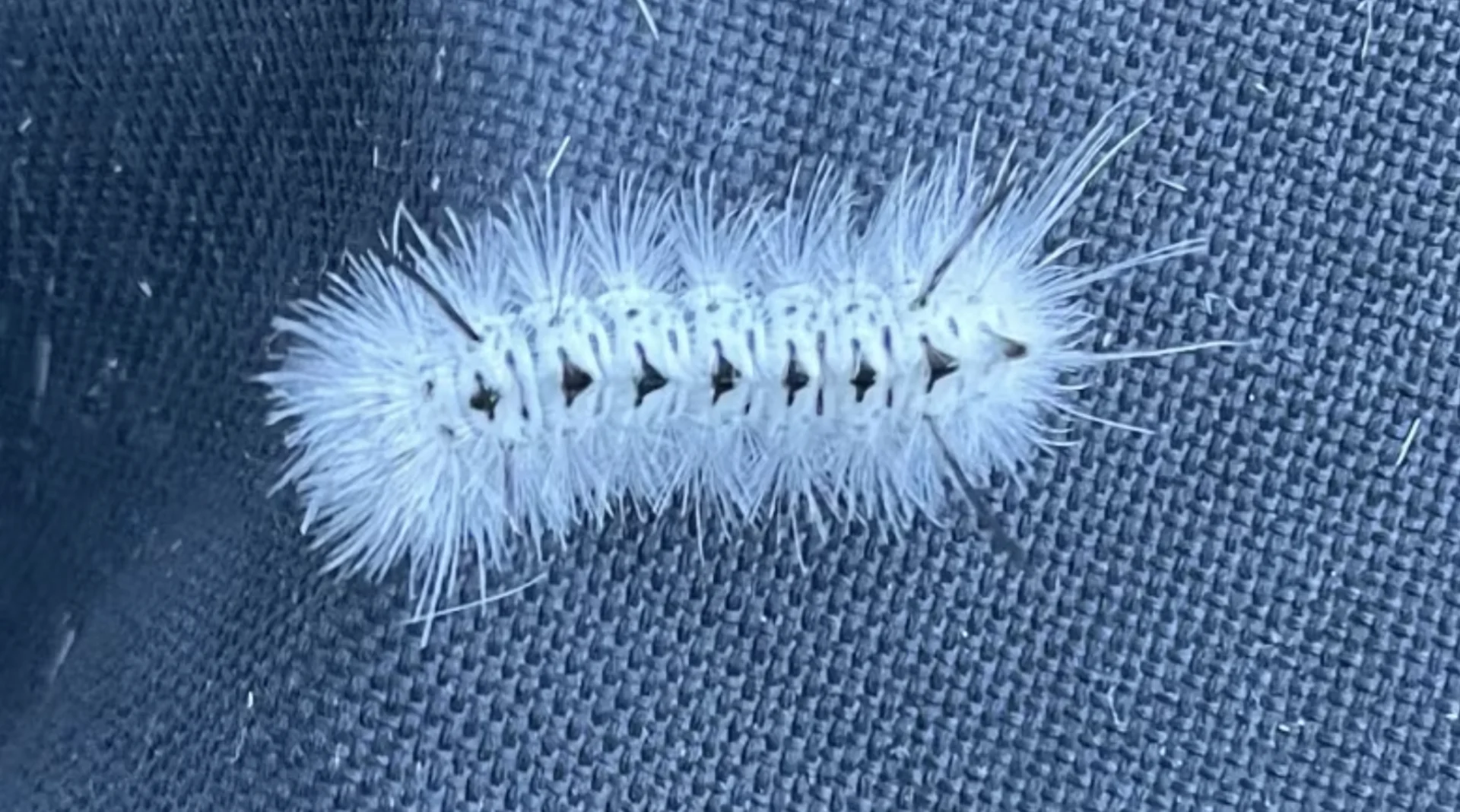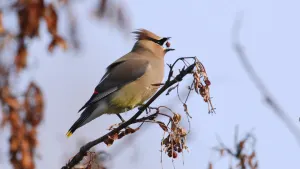
They're white, they're fuzzy, and maybe you shouldn't touch them
Prince Edward Island social media feeds have been filling up recently with pictures of the hickory tussock moth caterpillar, which can cause nasty skin irritations on some people when they are touched.
Until recently the species was undocumented on the Island, but that doesn't necessarily mean they are either new or invasive, said Clay Cutting of the P.E.I. Invasive Species Council.
"The species is very widespread on P.E.I., it appears," said Cutting.
"We're getting reports from a lot of different areas on Prince Edward Island. If it was a new arrival I would expect it to be kind of concentrated to a single area on P.E.I., whereas I'm seeing it pretty much tip to tip."

It's a good idea to avoid touching insects and plants you aren't familiar with, says Clay Cutting. (Ken Linton/CBC)
SEE ALSO: The wind is blowing toxic caterpillar hair into people's eyes
Given the presence of the caterpillar all over P.E.I., Cutting said it is more likely it has been on the Island for some time, and specific conditions this year have caused a spike in the population, leading to people taking more notice of them.
The species is native to Nova Scotia and New Brunswick so a few moths may have simply flown across the Northumberland Strait, he said. Even if they are new arrivals, they would not be considered invasive; instead, this would be a natural spread of their range.
In order to be considered invasive, a species must also be demonstrated to have a particular harm on the local ecosystem.
Are they toxic?
The hickory tussock caterpillar can cause severe skin irritation in some people, but it would be a stretch to call it toxic, said Cutting.
The irritation would be better described as an allergic reaction, he said, and it is more severe in some people than in others.
DON'T MISS: Fuzzy caterpillars are cute, but here's why you shouldn't you touch them

The bright white hickory tussock moth caterpillar is easily recognized. (Kevin Yarr/CBC)
Cutting noted that other caterpillars on P.E.I. can cause similar irritation.
One sign that touching the hickory tussock could be a problem is its bright white colouring and its long hairs, which make it easily visible. Showy caterpillars like this have evolved to let potential predators know touching them could cause issues.
Cutting said that in general, it is a good rule of thumb to avoid touching plants and insects that you are not familiar with.
WATCH: This moth species has been a menace to Canadian forests
This article, written by Kevin Yarr, was originally published for CBC News. Contains files from Island Morning.









